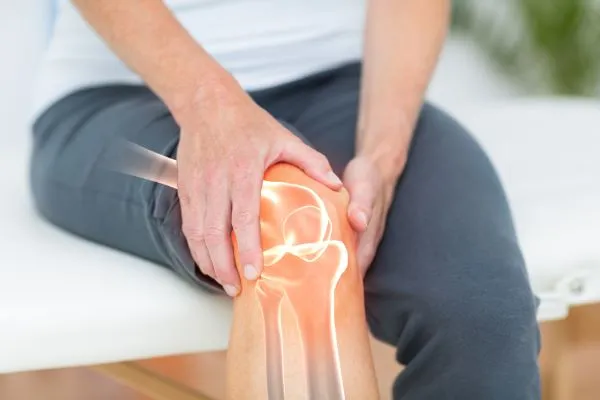Identify Key Knee Injury Diagnosis Codes
How do primary and secondary OA differ? The knee bears the weight of the human body and is susceptible to damage suddenly or over time. That’s why providers frequently use imaging scans to check for sprains, tears, and wear-and-tear damage. As a radiology coder, knowing how to report knee injury diagnoses will help ensure the claim receives reimbursement. Learn how to choose the correct knee sprain, inflammation, or arthritis diagnosis code below. Solve Ligament Sprain Coding Confusion The knee joint features four main ligaments that connect the femur and tibia bones together. Two cruciate ligaments and two collateral ligaments stabilize and strengthen the joint, but are also prone to injuries, such as sprains. A sprain occurs when ligament or ligaments stretch or tear. While spelled similarly, sprains differ from strains in that a sprain is an injury on the tissues that connect two bones together and a strain is an injury to a specific muscle or a band of tissue that attaches a muscle to a bone. You’ll assign codes from the following options for a cruciate ligament sprain: 6th character required: Each of the ICD-10-CM codes listed above carry 6th character required icons in the code set. You’ll need to assign a 6th character that corresponds to the laterality of the diagnosis. Use “1” for a right knee injury, “2” for a left knee injury, and “9” if the provider doesn’t specify which knee. 7th character required: You’ll also need to assign a corresponding 7th character to complete the diagnosis code. For the codes listed above, you’ll choose from the following 7th characters depending on the encounter type: Scenario: A 32-year-old patient presents to a radiology practice with sharp left knee pain. The patient experienced an injury while playing basketball. The radiologist captured anteroposterior (AP), lateral, and posteroanterior (PA) X-ray views of the patient’s left knee. After reviewing the images, the radiologist then performed magnetic resonance imaging (MRI) of the knee with contrast. After reviewing the MRI images, the radiologist writes their report and documents a left ACL sprain. In this scenario, you’ll assign S83.512A (Sprain of anterior cruciate ligament of left knee, initial encounter) to report the diagnosis. Tend to Patellar Tendonitis Dx Tendonitis is an inflammation of a body’s tendon. Knee tendonitis, better known as patellar tendonitis, occurs when the patellar tendon becomes inflamed from overuse, leg muscle tightness, excess body weight, or misaligned feet, legs, and ankles. The tendon connects the patella (kneecap) to the tibia (shinbone). Symptoms of patellar tendonitis can include tenderness and pain at the bottom of the kneecap, as well as swelling and a burning sensation. You’ll assign one of the following codes from the M76.5- (Patellar tendinitis) code subcategory: Parent code M76.5- features a 5th character required icon, which means you need an additional character to complete the code. In this category, 0, 1, or 2 indicate documented or undocumented laterality. Scenario: A 23-year-old female patient presents to an urgent care facility with pain and stiffness in her right knee. The patient recently joined an intramural volleyball team at her college. The physician orders X-rays of the patient’s knee, which reveal patellar tendonitis. In this scenario, you’ll assign M76.51 to report the diagnosis. Don’t Overthink Knee Osteoarthritis Codes Patients may also experience knee pain due to osteoarthritis (OA). OA is a degenerative joint disease that occurs over time, typically due to regular wear and tear on the joints. As OA progresses, the joint’s cartilage breaks down and eventually the connecting bones touch. Patients may experience stiffness, swelling, and pain in the joint as a result of the OA. Several factors contribute to a patient’s OA risk, including age, sex, obesity, genetics, and joint injury or overuse. OA is categorized as either primary or secondary. Primary OA is the most common form of the joint disease and occurs naturally over time. Secondary OA typically develops following an abnormality in the joint, such as an injury or trauma, inflammatory arthritis, or congenital joint disorders. “There are no specific codes for primary and secondary arthritis, but now with secondary arthritis, there are specific codes for post-traumatic and secondary osteoarthritis,” said Karen F. Perry, CPC, CPB, CPC-I, OCS, medical coder, during her session, “Current Orthopedic Coding Issues,” at AAPC’s HEALTHCON 2024. You’ll refer to the M17.- (Osteoarthritis of knee) code category to assign a code that corresponds to the OA type and which knee or knees are diagnosed with the condition. If the radiologist diagnoses the patient with primary OA in both knees, you’ll assign M17.0 (Bilateral primary osteoarthritis of knee). But if the radiologist finds primary OA in only one knee, you’ll assign one of the following M17.1- (Unilateral primary osteoarthritis of knee) codes: Remember: Code M17.1- carries a 5th character required icon, which means you must use a 5th character to complete the code for the claim. On the other hand, you’ll select from the following codes when the radiologist documents a secondary OA diagnosis: The ICD-10-CM code set also lists post-traumatic OA codes. These codes are for diagnoses of OA that occurs in a short period of time, usually within a year, in the joint where the patient previously suffered a fracture or dislocation. Similar to the primary OA codes, the post-traumatic OA codes are separated by laterality: Lastly, you’ll assign M17.9 (Osteoarthritis of knee, unspecified) for an OA diagnosis of the knee when the provider doesn’t specify the laterality or type of OA. Michael Shaughnessy, BA, CPC, Development Editor I





